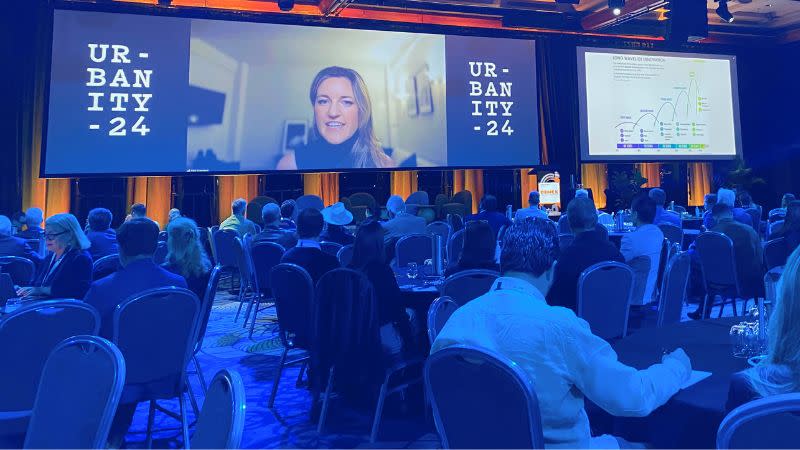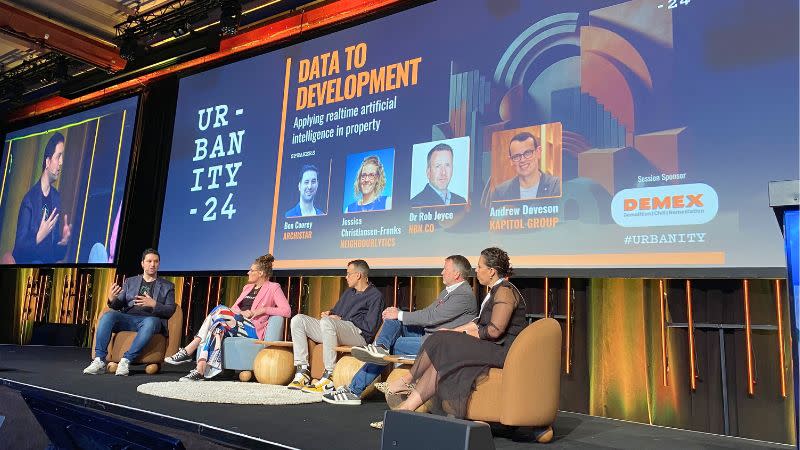An ‘Over-Confident Intern’ but AI Exceeding Expectations

The global construction industry could save as much $US1.63 trillion a year from the productivity improvements that will come with artificial intelligence, according to a leading architectural futurist.
New York-based technology strategist Nikki Greenberg warned that while the industry was “very risk-averse”, those organisations that adopted AI would win out eventually.
Speaking to delegates at The Urban Developer’s Urbanity conference on Queensland’s Gold Coast, Greenberg said research showed there was a 34 per cent task-automation risk for most jobs.
“What that means is about a third of the tasks that you do every day can, and should, be automated,” she said. Generally, automation suited those jobs considered repetitive, dangerous or dull.
Greenberg said that globally the industry was “incredibly inefficient”, with an estimated 91.5 per cent of construction projects going over budget, over schedule or both.
“Thirty-five per cent of a trade’s time is spent with non-productive activities… waiting around,” she said. About 30 per cent of materials typically end up as waste and we can do so much better.
“Now we can use technology like AI to do our jobs better, to find these efficiencies, to be more productive and have a better outcome.”
During its short evolution AI had continually exceeded all expectations reaching milestones more quickly than expected.
Environmental studies, submittal documents, data visualisation, safety training and progress tracking were all being performed with generative AI.
But, Greenberg cautioned, at this point generative AI— generating text, images, videos, or other data using generative models, often in response to prompts—was like an over-confident intern.

“That is to say it’s smart, it’s clever and it’s been trained but, like an intern, you need to supervise it, and you need to teach it the way you want things done,” she said.
“You would never just take an intern’s work and send it out to your clients without checking and in the same way you shouldn’t just blindly send out work from AI.
“You still need to train it … check it. It’s young and it’s overconfident.”
And, according to a panel discussion at Urbanity on Thursday comprising speakers from the frontline of AI adoption in Australia’s property development sector, the opportunities are huge for the industry.
But they also said so too is the task of wrangling the vast amount of available data into a usable, practical and reliable form.
“It’s been an interesting time in the use of data in the property sector across the last seven years because there wasn’t that much seven years ago when we started,” Neighbourlytics co-founder Jessica Christiansen-Franks told Urbanity attendees.
“And now, it’s like drinking from a firehose—there’s data everywhere, and nobody knows what to do with it.”
Neighbourlytics is a data analytics company that pools together publicly accessible data from social media and other sources to understand how people interact with a particular area. The information is used by governments, town planners, property developers and asset managers to deliver better economic and social value in communities.
“We use AI a lot to compute that data,” Christiansen-Franks said. “Not to give a final answer but as a shortcut to sort of make our own investigations faster, and it’s absolutely brilliant.”
But she cautioned that at this point in its development she would not trust generative AI to draw conclusions, noting that: “The bias in data gets amplified with AI”.
“This is something that’s not really spoken about much … [but] with a lot of the fear that comes from generative AI, whole segments of society are opting out of being part of the training models, which means they have a massive bias.”
Christiansen-Franks said: “The thing with data is you still do have to do the heavy lifting and do the thinking … it’s just like having a library with more books … which should just help you ask more questions, and be more curious and learn faster. It doesn’t give you the answers. And so it’s a different way of working.”

Kapitol Group director Andrew Deveson said the development sector was “one of the least digitised industries”.
“Our industry is so ripe for disruption because it’s been so disjointed and all that sort of stuff that there’s so much opportunity,” he said.
“A lot of this stuff (AI) is sort of Beta still but we’re all in because we know it’s only going to get better.
“This time last year, we had an IT manager and this year we have a CTO (chief technology officer) with a team of 10 people.”
Deveson said he believed, with the speed at which AI was progressing, the spectre of “robo workers” in the development and construction industry was on the horizon.
“The cost of a worker that you have to hire at the moment in commercial construction is pretty high … so, yeah, I think it’s pretty feasible.”
Archistar founder and chief executive Ben Coorey said one of the big challenges for the adoption of AI in the development sector was “the data itself is very challenging”.
The company’s platform uses cutting-edge AI that helps property professionals find profitable land development sites, assess for feasibility and at the moment is generating more than 1.2-million design strategies a month.
“We’re seeing all this great stuff happening, but every council is unique, every building is unique, everywhere around the world, like it’s very unique.
“So it’s bringing all that together, and they’re not congruent. It’s not the same data. So I think one of the challenges we’re going to have, to get really good models, is we have to deal with the complexity that’s out there and that’s not an easy task.”
Deveson said Kapitol had fitted cameras to site workers’ hardhats to capture vision for AI to cross-check a build was going to plan.
But they found the footage was incomplete so now a person is employed to walk the site to capture video in a more organised way.
A complication had cropped up, however, in that some workers were refusing to allow their images to be recorded and, in fact, some EBAs contained that restriction, he said.
















